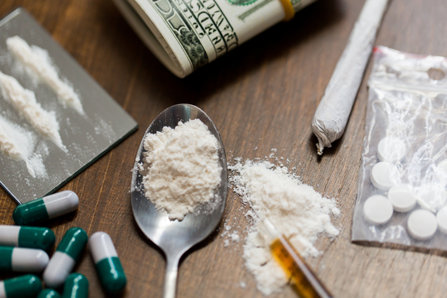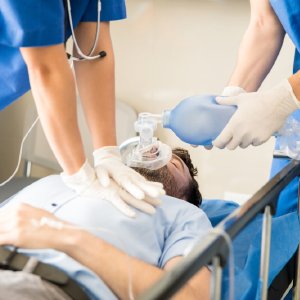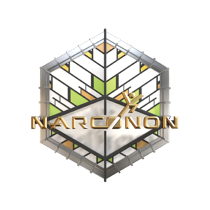Critically Important Parenting Skills: Detecting a Child’s Drug Use

Part I
It is more important at this moment than ever before, that parents are able to identify drug use in their children. Why? Because there’s an unprecedented availability of addictive and deadly drugs in our cities, towns, suburbs and rural areas. It’s never been easier for a young person to take a few faltering steps in the direction of drug abuse and then get roped into using something extremely addictive – and then he (or she) is trapped. Worst case scenario is that this addictive substance takes his life.
Part of a parent’s job is to educate his children on the truth about drug abuse and its dangers. The Narconon Arrowhead website has a wealth of information to help a parent do this job. We’ll give you some links to important information later in this article.
The other part of a parent’s job is identifying drug use when it shows up. Because even some youth who are well-educated in the dangers of drug abuse are going to stray.
To help you get started in this task, here are signs you need to watch for.
Adderall
This drug may be abused by a student who’s concerned about his academic progress, who is stressed about being accepted into a good college or getting a scholarship. It is a strong stimulant made from different types of amphetamine and it is addictive. Stimulants suppress the appetite and make a person more wakeful. In fact, a young woman may use this or other stimulants in an effort to keep her weight down.
A young person abusing stimulants will probably start keeping odd hours, staying up late at night or even all night. He may study for long hours when otherwise, this would not be his habit. Heavy or lengthy use can result in paranoia or aggressive behavior. He could become anxious and experience palpitations.
Marijuana
Of course, marijuana has a distinctive smell, but your loved one may use this drug away from home and clean himself up to reduce the smell before coming home. Smoking pot makes one’s eyes red so if you suspect marijuana use but your child does not have red eyes, check his possessions for eye-whitening drops.
A person who’s currently high can become chatty, euphoric or lethargic. After using the drug for a while, a person’s memory becomes foggy and the person is easily distracted from tasks.
Heavy use often results in anxiety or paranoia. A pot smoker tends to move slowly and may sleep excessively. Former interests and scholastic goals are often dropped. His friends tend to change so that he hangs out with other people who are smoking marijuana.

Opioids
This category of drug includes painkillers like hydrocodone (Vicodin, Lortab), oxycodone (Percodan, OxyContin), morphine (MS Contin), heroin and synthetics like fentanyl. These drugs all have a similar effect – they slow the breathing and make a person less aware of pain or their surroundings. A person high on these drugs could dope off suddenly. His vision may be blurry and he could vomit when the drug takes effect. He is very likely to suffer constipation so could be looking for laxatives.
If a person develops a tolerance to these drugs, some of these signs will be less marked. When he’s fully addicted, a dose of opioids will simply keep him from getting sick from withdrawal symptoms without producing euphoria. If he overdoses, he will be hard or impossible to rouse and his breathing will be hoarse and uneven. In this case, he needs instant medical attention!
“Usual” Characteristics of a Teen
Some people think that a teen becoming isolated, staying in his room most of the time and refusing to take part in family activities are just normal and usual changes teens go through. In these days of plentiful addictive drugs, it’s no longer safe to just let your child change in these ways without looking more closely.

If you are seeing signs that could indicate drug use and your child denies it, you could consider bringing your family doctor in to help. Teens may be resentful if you ask your doctor to drug test your child but there is a possible far worse result than this. And that is your being blind-sided when an addiction is revealed. Or far worse, by the overdose death of your child. Being alert, questioning and insistent is your best path to preventing this disastrous result of drug abuse.
In Part II of this article, we will point out the signs of a young person using inhalants, alcohol, cough syrup or synthetic drugs like Spice or bath salts.
To read Part II of this series: Can You Detect the Use of these Substances by Your Child? click here.
REFERENCE LINKS
To obtain more information for use when you are educating your children, use the following links.
General drug information
http://www.narcononarrowhead.org/drug-abuse/
Prescription drugs
http://www.narcononarrowhead.org/drug-abuse/signs-symptoms-prescription-drug-use.html
Marijuana information
http://www.narcononarrowhead.org/drug-abuse/signs-symptoms-marijuana-use.html
Vicodin (painkiller)
http://www.narcononarrowhead.org/drug-abuse/signs-symptoms-vicodin.html
Heroin
http://www.narcononarrowhead.org/drug-abuse/signs-symptoms-heroin-use.html


